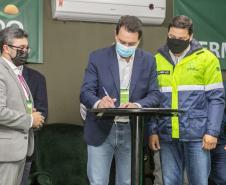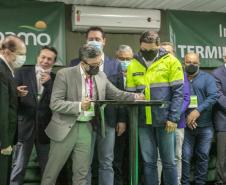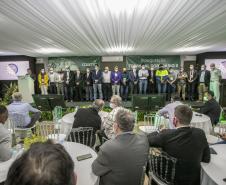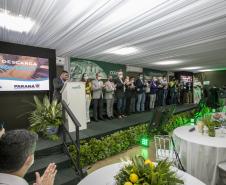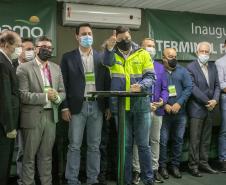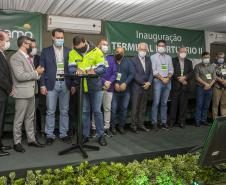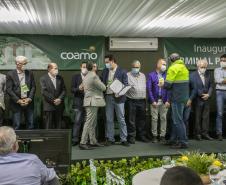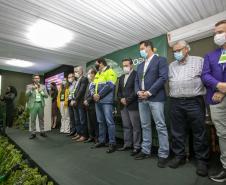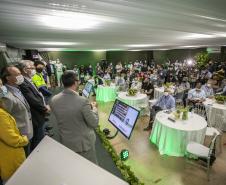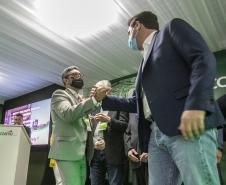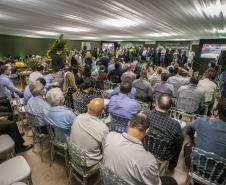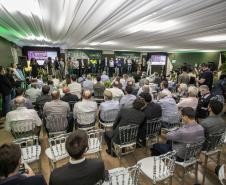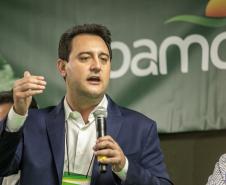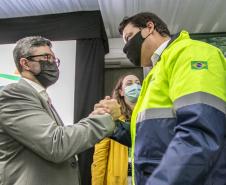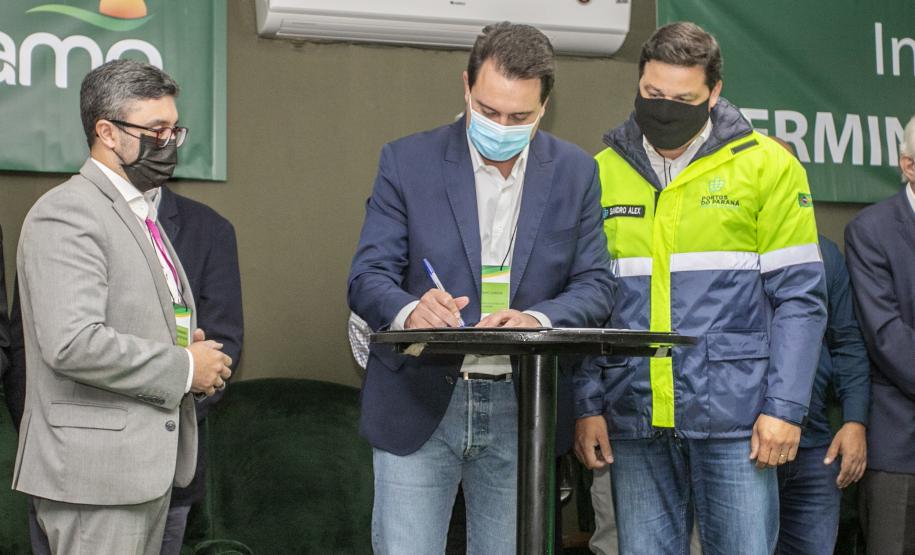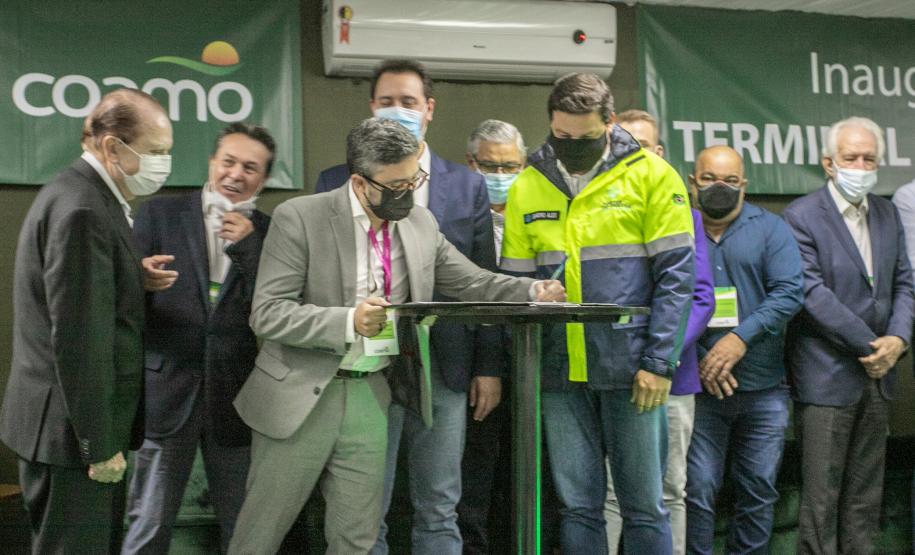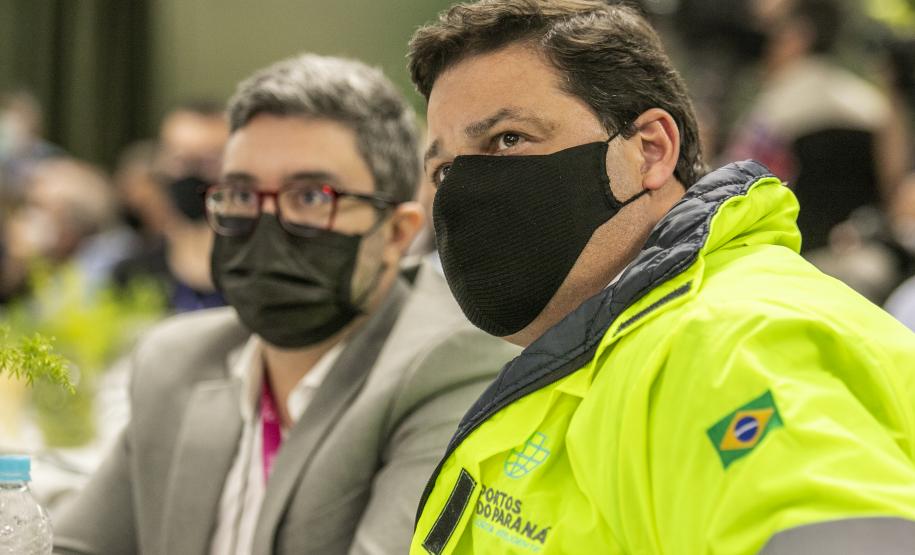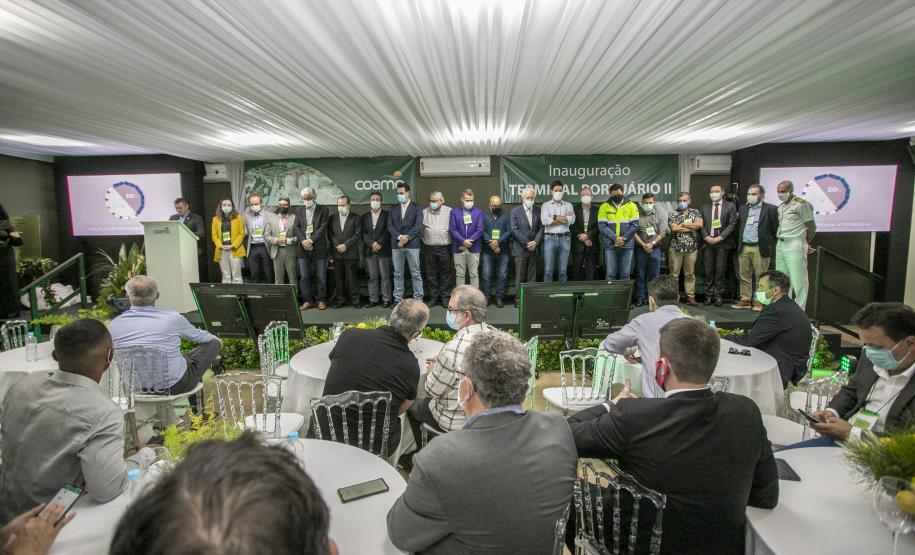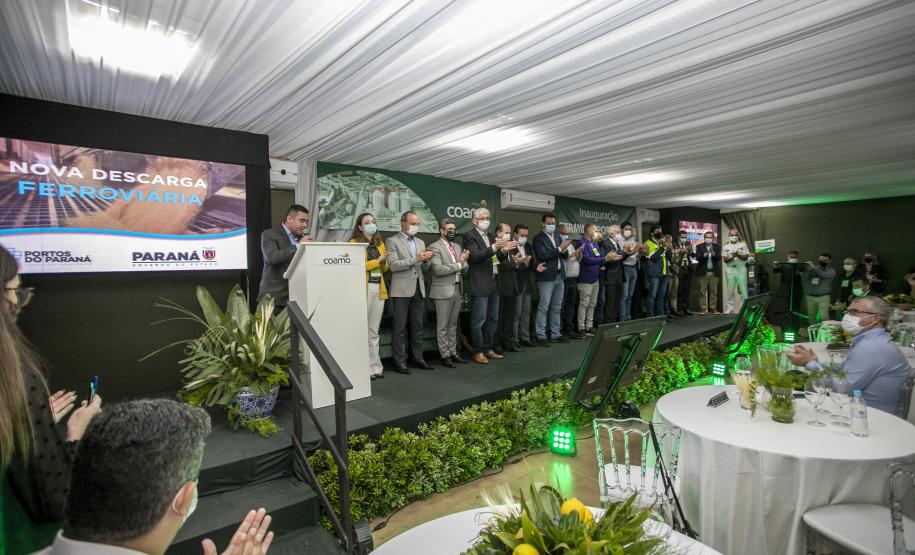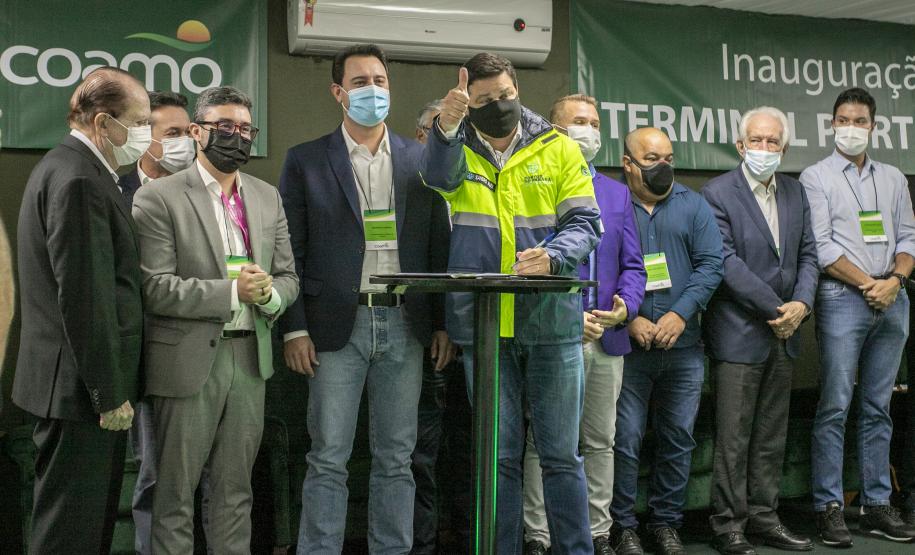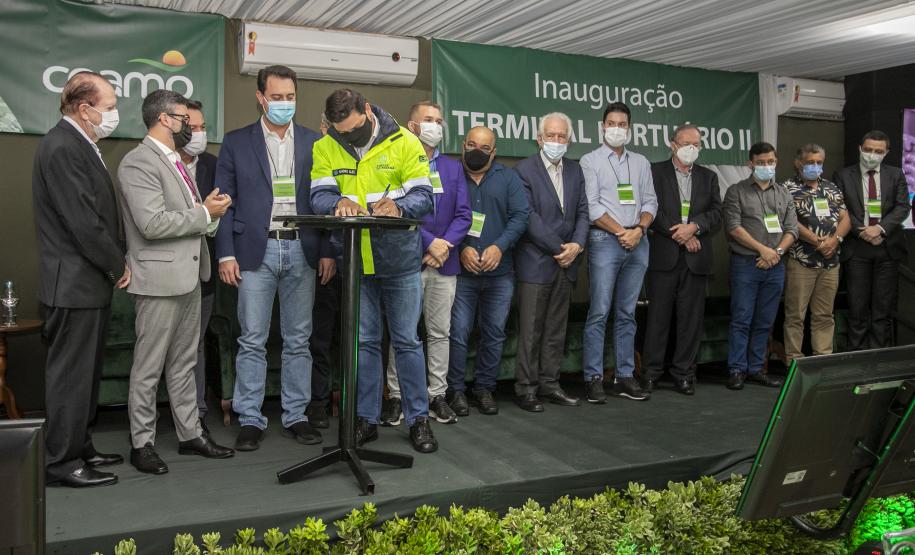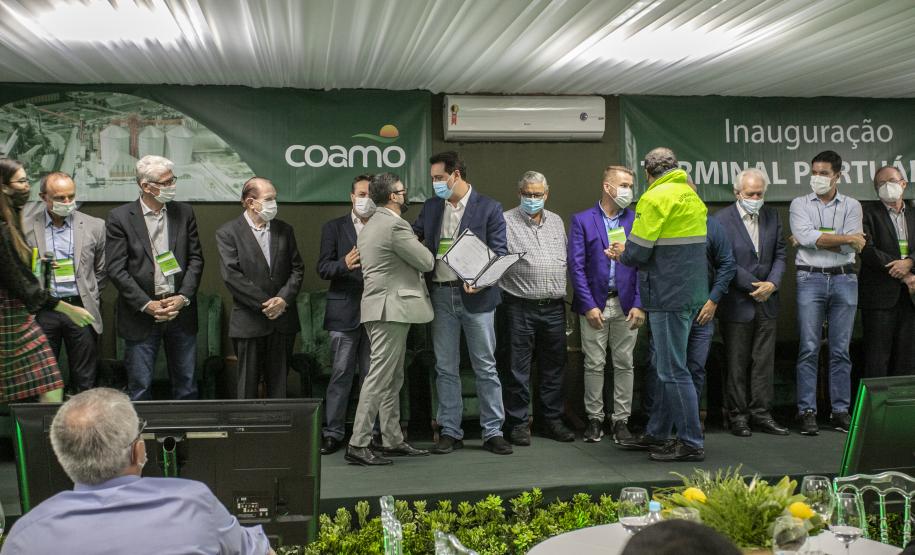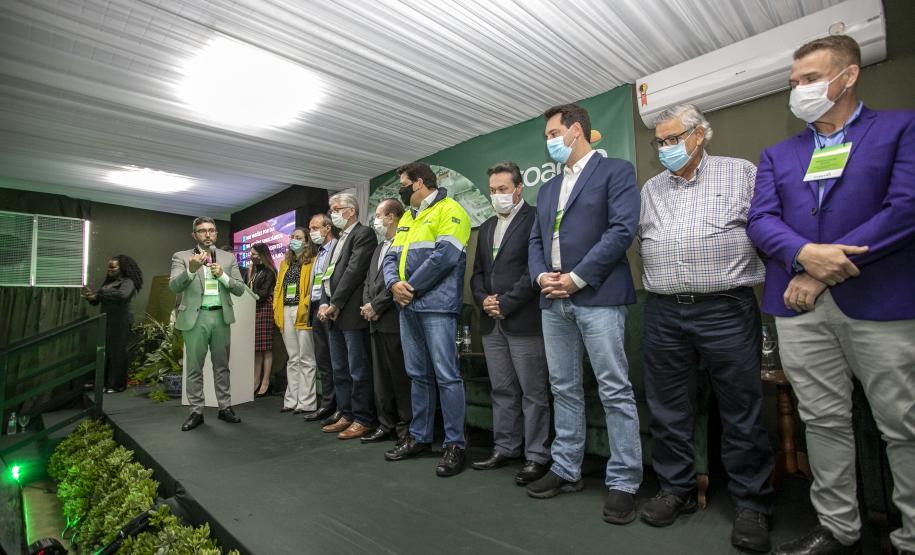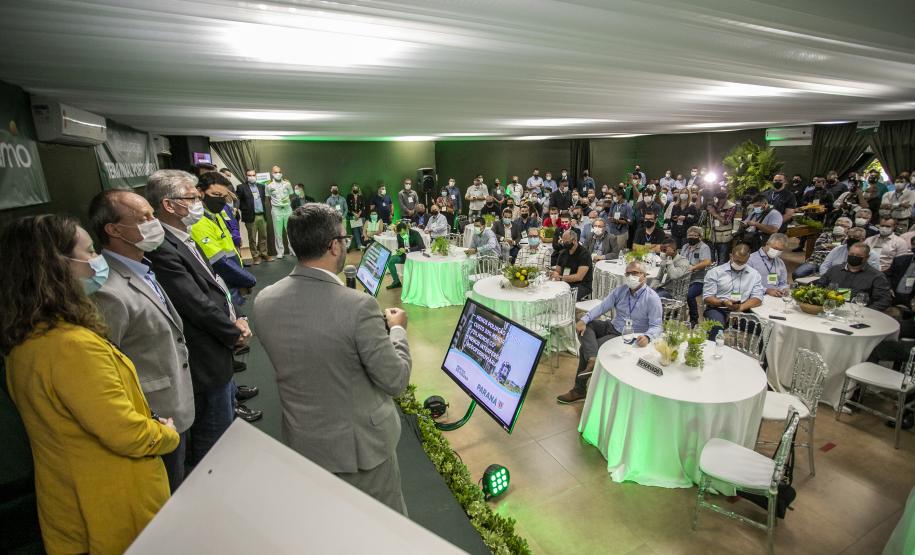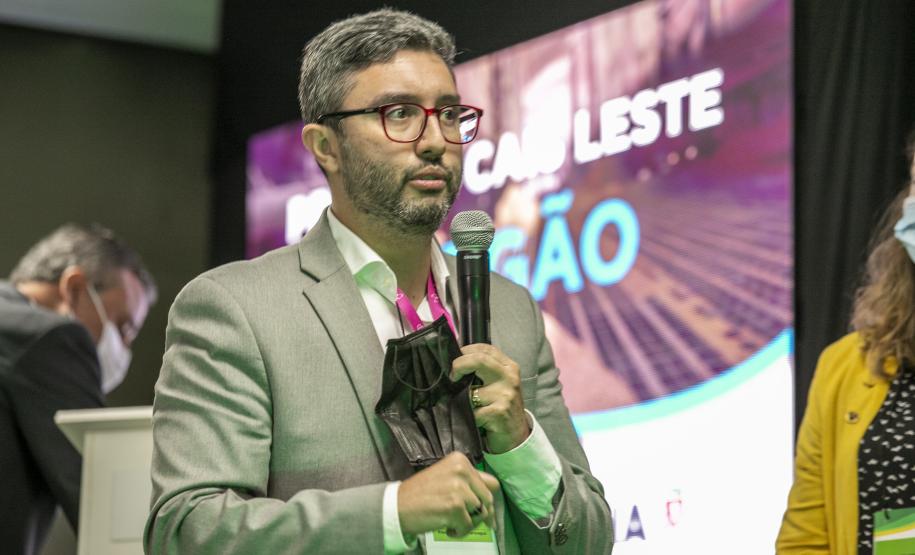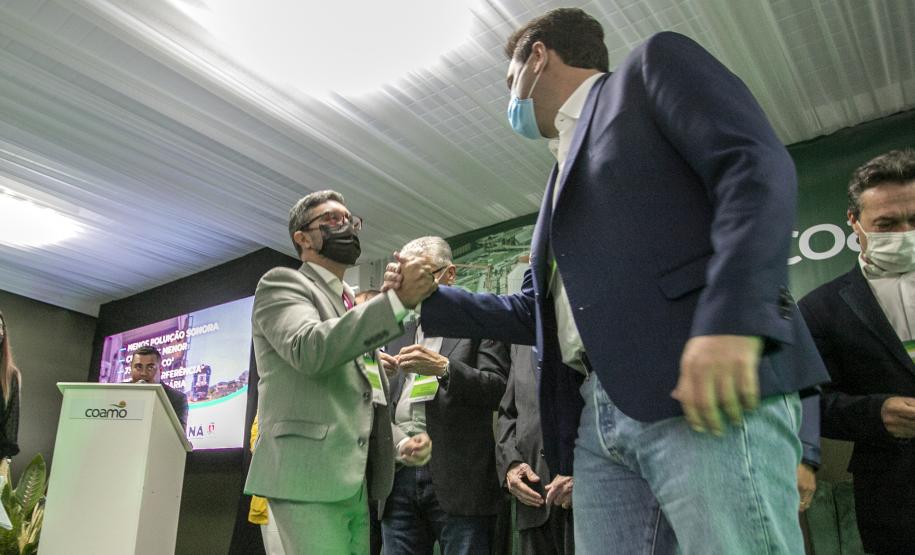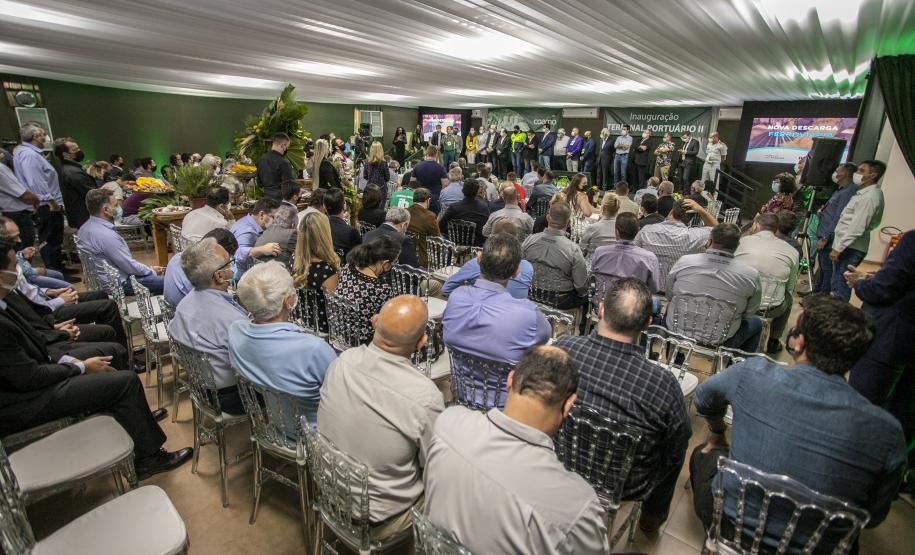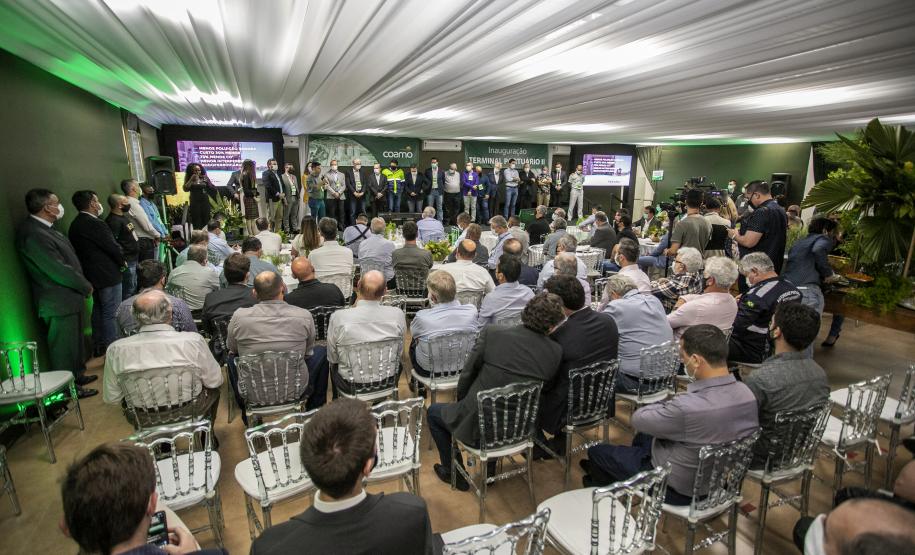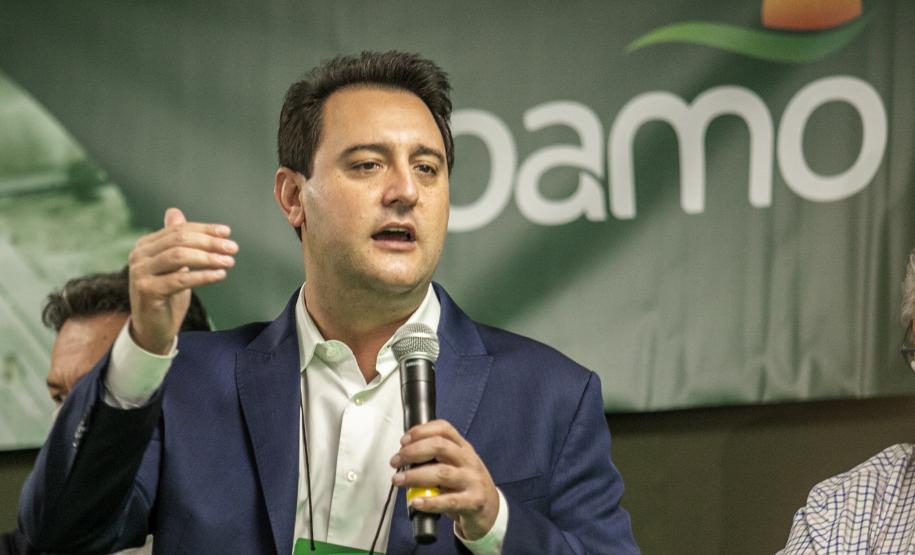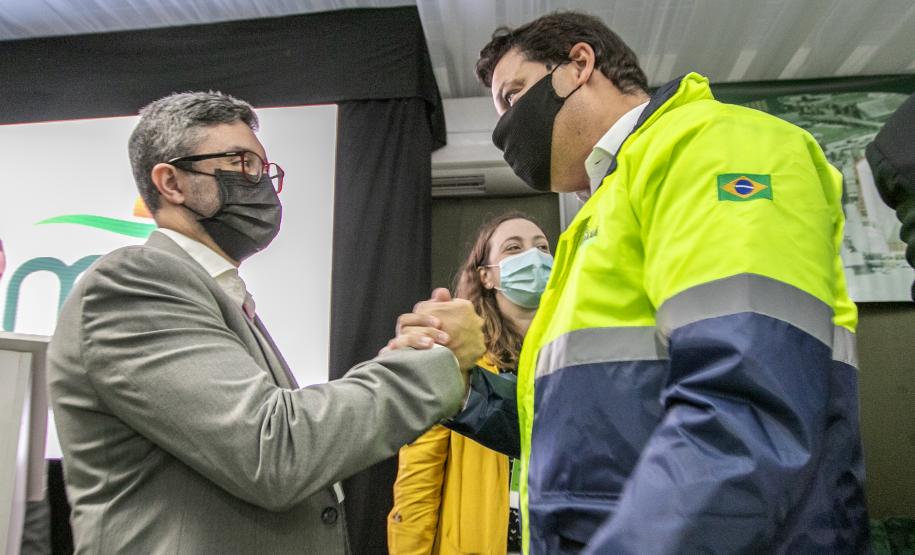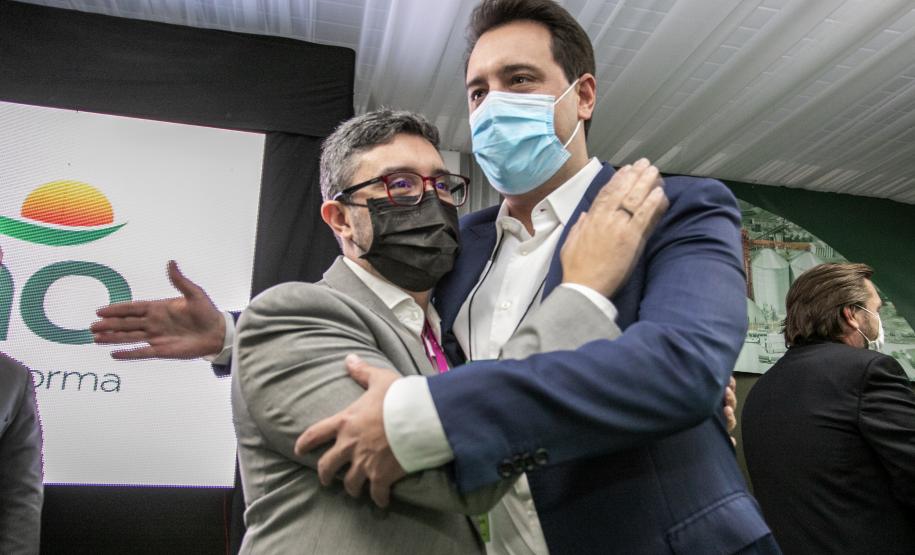It was launched the project that expands train unloading at the Port of Paranagua 13/12/2021 - 10:25
The Port of Paranagua begins to prepare its structure to absorb the production transported by rail. Last Thursday, December 9, the governor of the state, Carlos Massa Ratinho Junior, launched the Cais Leste project, also called “Moegão”; an investment of R$500 million. The launch took place during the opening ceremony of Coamo's new port terminal.
The notice must be published on this week in the Official Gazette of the State, and as soon as all stages of the bidding process are completed, the work will begin, with a delivery period of 180 days.
The governor stated that the construction of the “Moegão” brings more logistical efficiency and improves the competitiveness of the State. "It is the largest infrastructure project in Paraná, which in addition to improving mobility in Paranagua, increases the port's carrying capacity, with a significant expansion of train loading and unloading," he said.
“Lots of jobs will be generated with this work, both during execution and when it is in operation. With the expansion of the port's capacity, we are going to need more workers to meet the need for manpower”, highlighted Ratinho Junior. "It's a transformation in Parana's infrastructure, which is becoming the largest logistics center in South America."
The project foresees the adequacy of access, redistribution of internal lanes and positioning of scales and hoppers (intended for the storage of grains). Railway unloading will be centralized in an exclusive hopper, but the accesses to the terminals in the eastern part of the Port will also be restructured, optimizing the cargo reception capacity also by road mode.
With an area of 595,000 square meters, the three lines that make up the project will have the capacity to carry up to 2,000 tons of grain and bran per hour. They will be connected to the 11 terminals of the East Export Corridor.
With this, the forecast is to expand from the current 550 wagons, which unload daily in the Eastern Corridor, to around 900 per day — almost 300 in each of the three lines. Currently, 14.9% of cargoes arrive at the port by rail, but the forecast is to equalize this logistics, with 50% of cargoes coming by trains and the other half by trucks.
“We currently have limit in receiving railways, not because of a lack of demand, but because we don't have the capacity to receive more”, explained the president of Portos do Paraná, Luiz Fernando Garcia. "We have a geographic limit for expansion, so with this project we are going to centralize the unloading of 11 terminals in a single point, bringing more logistical efficiency."
The State Secretary for Infrastructure and Logistics, Sandro Alex, stated that this will be the State Government's largest investment in infrastructure. "It is a huge project, an investment of half a billion reais that allows optimizing the unloading of cargo, not only in the rail mode but also in the road, expanding capacity by 24 million tons," he said.
The “Moegão” Project will reduce the costs and the CO2 emission with the operation. In addition, it is also planned to reduce intersections between urban roads in Paranagua and railroad tracks, going from 16 to five intersections in the city.
“This structure will reduce the road obstacle and the traffic of trucks in the city, with the removal of level crossings, mainly on Roque Vernalha Street, which is the largest in the city”, highlighted the mayor of Paranagua, Marcelo Roque.
LOADING – This project is in line with another one at the port, which is the modernization and expansion of the East Corridor (Corex) and the pier in a T shape. In the development phase, the project foresees a new complex with four berths; access bridge; eight fishing towers; and capacity to ship 4,000 tons per hour on each of the eight lines. Thus, the expectation is to triple the current shipping capacity in the Eastern Corridor.
In addition, the State Government is also preparing the modernization of the rail modal, with the New Ferroeste project, a railroad connecting the city of Maracaju (in Mato Grosso do Sul State) to the Port of Paranagua.
COAMO TERMINAL – Coamo invested R$ 200 million in the construction of the Port Terminal II, in Paranagua, to supply grain and bran exports. With three silos and a bulk warehouse, the structure has a total storage capacity of 150 thousand tons.
The terminal has five hoppers, with operational capacity to receive 1,380 tons/hour, and dumpers for trucks that facilitate the flow of movement in the export corridor. Added to the other existing terminal, the cooperative has a shipping capacity of up to 7,000 tons/day.
In 2020, Coamo exported 4.5 million tons of grains and soy meal, with sales of US$ 1.5 billion. “This investment is part of our strategic growth vision. Our export volume increases every year, following the growth of Coamo”, highlighted the CEO of the Board of Directors of Coamo, José Aroldo Gallassini.
Founded in 1970 by 79 farmers from Campo Mourao, in the Midwest of Paraná, Coamo currently has 30,000 members in the states of Paraná, Santa Catarina and Mato Grosso do Sul.
In the cooperative's operations, commodity exports stand out, carried out in the export corridor of the Port of Paranagua since 1990. The largest cooperative in Latin America, Coamo is also among the main exporting companies in the country.



